Metatarsalgia: what it is and how to cure it with the right exercises
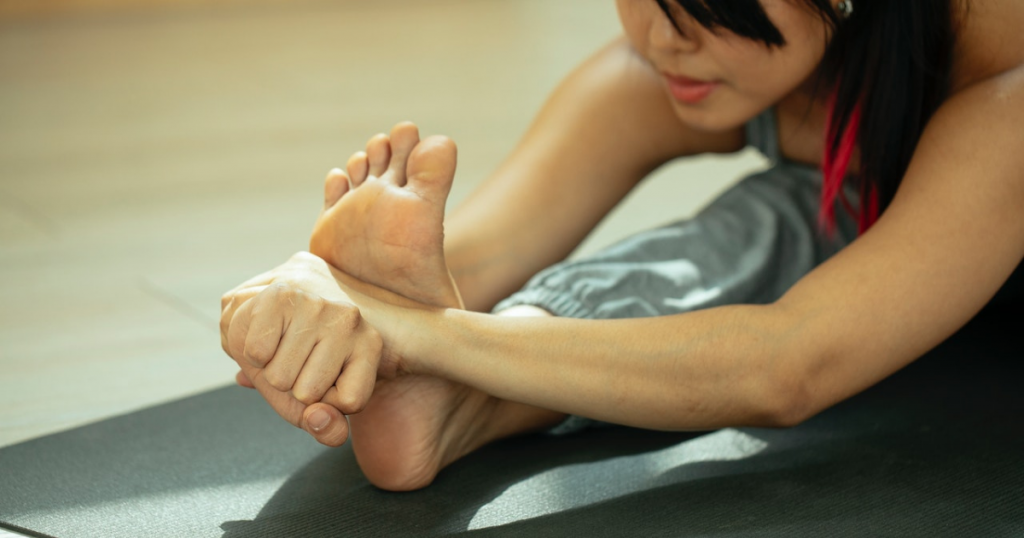
“Metatarsalgia” is a generic term indicating widespread pain in the forefoot, in the area around the metatarsal-phalangeal joints. This is a fairly frequent inflammation, which can cause significant limitations when walking and therefore worsen the quality of life for those who suffer from it.

Very often, metatarsalgia is caused by an excessive overload of the joint, but it may also be a symptom of other problems, such as Morton’s metatarsalgia (Morton’s neuroma), stress fractures, bursitis or untreated tendinosis or inflammatory arthritis.
In this article, our physiotherapists illustrate the most frequent symptoms and causes of metatarsalgia, then explain the most effective treatment and remedies, with a final insight into the exercises that can help not only to reduce the pain, but also to recover foot mobility and return to walking without any difficulty.
The metatarsus: anatomical description
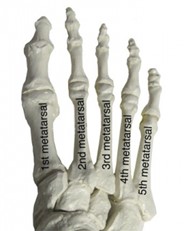
The metatarsus consists of five long bones, called “metatarsal bones”. Each metatarsal bone –or simply metatarsal– consists of a proximal base, a shaft (the long part) and a distal head, and are numbered from I to V. They are connected proximally to the tarsal bones and distally to the phalanges.
With the tarsal bones, the metatarsal helps to form the foot arch, which is essential for supporting the weight of the body and for walking. The bases of the metatarsal bones articulate with each other at the intermetatarsal joints, while the joint between the head of the metatarsi and the respective proximal phalanges is called the metatarsophalangeal joints, which is the anatomical part that tends to become inflamed, causing metatarsalgia.
Causes and symptoms of metatarsalgia
The most evident and common symptom of metatarsalgia is acute pain when walking, localised in the sole around the metatarsophalangeal joints, particularly between the first and second joint. The pain felt when walking may also be accompanied by a sensation of burning, electric shock or needles in the sole of the foot.
The most common causes of metatarsal inflammation are:
- Metatarsalgia due to overload, caused by intense or prolonged training
- Morton’s Neuroma
- Foot stress fractures
- Intermetatarsal bursitis
- Inflammatory arthritis
- Synovitis/capsulitis of the metatarsophalangeal joint
- Tendinosis/tenosynovitis
- Retraction of the plantar fascia
- Claw foot
- Excessive pronation of the foot
- Claw or hammer toes
- Retraction of the toe extensor tendons
Treatments and remedies: what to do in the case of metatarsalgia
Diagnosis and use of anti-inflammatory drugs:
The condition must be diagnosed by a doctor, who using clinical examinations and instrumental diagnostics (x-ray and magnetic resonance) can identify the cause of the metatarsalgia. In most cases, as the pain is related to an inflammation of the metatarsophalangeal joint, the doctor may prescribe anti-inflammatory drugs or, in the most severe cases, cortisone infiltration directly in the painful area.
Physiotherapy
The physiotherapy programme usually includes educating the patient, cooperation with a podiatrist, manual or instrumental therapy, stretching and strengthening exercises.
Educating the patient refers to teaching them how to rest the foot or vary the physical activity which causes the foot pain, establishing the recovery times and recommending exercises to be done alone. Cooperation with the podiatrist becomes fundamental when, in addition to rest, it is necessary to use an orthotic insole to rest the metatarsal heads or correct the position of the sole of the foot.
Manual therapy aims to manipulate any stiff joints and relieve the tension on the fascia and muscles. Instrumental therapy, such as TECAR or LASER, on the other hand, aim to reduce the inflammation.
Finally, stretching exercises mainly train the calf muscles, the Achilles tendon, the plantar fascia and ankle and foot joints; strengthening exercises focus on the intrinsic muscles of the foot, helping to reduce the pain and prevent further inflammation.
The physiotherapist’s advice: useful exercises for metatarsalgia to be done at home independently
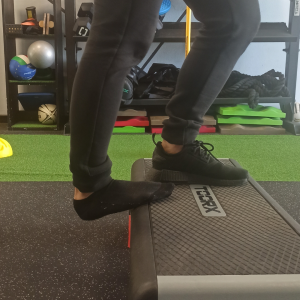 |
Stretching of the calf and Achilles tendon Standing on a step, lower the heel of the foot suffering from metatarsalgia while keeping the knee straight. Hold for 30-60 seconds and repeat three times. |
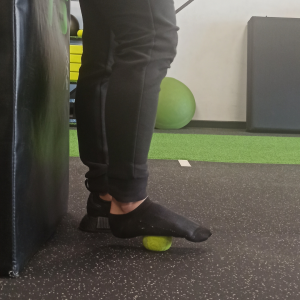 |
Self-massage of the plantar fascia with a tennis ball Standing with the hands resting on a wall, place the tennis ball under the centre of the foot (not in the painful area!). Apply slight pressure on the ball with the sole of the foot and massage the plantar fascia for 60 seconds. Repeat three times. |
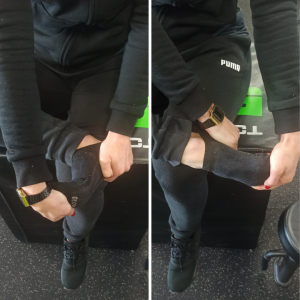 |
Stretching the foot while sitting Sit on a chair and place the injured foot on the other knee. Hold the ankle with the hand on the same side and the toes with the other hand. Pull the toes towards you until you feel a slight tingle but without feeling pain. Hold the position for 5-10 seconds and repeat ten times. In the same way, sit on a chair and place the injured foot on the other knee. This time, hold the ankle with the other hand and slightly bend the toes with the hand on the same side, until you feel discomfort but not pain. Keep the toes bent for 5-10 seconds and repeat ten times. |
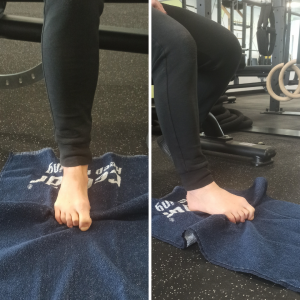 |
Strengthening the foot muscles With bare feet, place the painful foot in front of you, resting on a towel. Crumple the towel with the toes, keeping the rest of the foot on the ground. Do this 15 times, repeating the series three times. |



